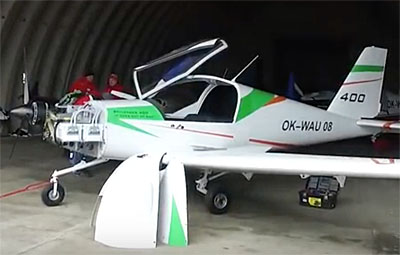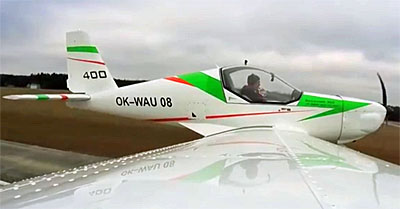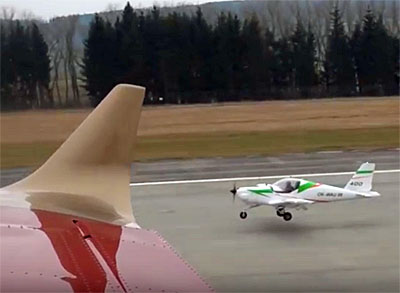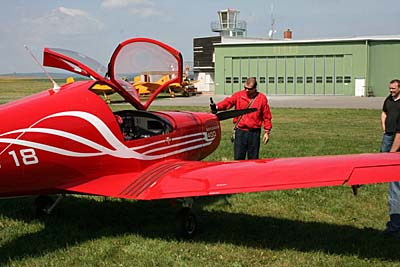 As the world appears to shift into overdrive about electric cars, planes, and drones, what is happening in this dynamic, unfolding sector in aviation?
As the world appears to shift into overdrive about electric cars, planes, and drones, what is happening in this dynamic, unfolding sector in aviation?
Recent news from Pipistrel spoke to their continued development of their Alpha Electro. This Slovenian company has long pursued this and may be leading in commercialization but — as with electric autos — this remains a minuscule part of total sales. However, it attracts outsized attention from mainstream media, regulators, and others.
Recently, my friend and LAMA Europe associate, Jan Friedrich, alerted me to a new success story.
 The Skyleader company is somewhat known in the USA although perhaps by their earlier name Kappa. The more correct name was and is Jihlavan Airplanes but Skyleader is a better marketing name.
The Skyleader company is somewhat known in the USA although perhaps by their earlier name Kappa. The more correct name was and is Jihlavan Airplanes but Skyleader is a better marketing name.
Americans have seen examples of the company’s top-of-the-line Skyleader 600 — here’s our video review of the model — but sales have not taken off in this country. The company always mounts a large, handsome display at Aero Friedrichshafen …coming up in about three months, and we will report from Germany on news at that show. The size and cost of their display suggests they are doing at least reasonably well, so perhaps interest will grow in the USA.
 Meanwhile, rather quietly, Skyleader made first flights on their pure electric (that is, not hybrid) light aircraft.
Meanwhile, rather quietly, Skyleader made first flights on their pure electric (that is, not hybrid) light aircraft.
Based on their intermediate model, Skyleader 400, you can see for yourself — and hear for yourself — that the aircraft appeared to fly well.
About the regular, Rotax-powered model, Jihlavan/Skyleader said, “The SL400 a racy ‘sports car-inspired’ aircraft with new features such as side opening canopy, aggressive cowling and easily-maneuverable fixed gear. Having trapezoidal wings with 120 liters (about 32 gallons) of fuel endurance, available fuel injection and simple instrument panel, it appeals directly to sport aviation enthusiasts.”
 I believe no doubt exists that the first successes of electric aircraft will be those that are lightest. Electric already works well in genuine Part 103 ultralights. Pioneer Randall Fishman and Mark Bierle have been flying with electric power for years. An article from eight years ago proves how long this has been true.
I believe no doubt exists that the first successes of electric aircraft will be those that are lightest. Electric already works well in genuine Part 103 ultralights. Pioneer Randall Fishman and Mark Bierle have been flying with electric power for years. An article from eight years ago proves how long this has been true.
Electric LSA or LSA-like aircraft are already flying as this article further demonstrates. At present, they are limited in duration, but here’s what I always say, “Any major breakthrough in battery energy density — that is, batteries providing more range, more duration aloft — may start an avalanche of electric-powered aircraft. Exciting times are ahead!
Meanwhile, here is video evidence of the work by Jihlavan/Skyleader:
And here’s a little more detail about the electric propulsion components from last year’s Aero:


Thanks much for posting the article. In looking about the web I’m seeing some confusion about the status of FAA rules for the certification of electric battery power light sport aircraft. If you have a reference to an article that you give some credence to, that would be greatly appreciated.
Hi Krista: I’m glad you like the article. *** As to electric propulsion, the confusion is understandable but the answer is fairly simple. Unless an aircraft is registered Experimental Amateur Built (EAB), it will be challenging to use electric propulsion. An EAB can use any powerplant the builder/manufacturer wishes. LSA cannot choose electric propusion …yet, but LAMA and USUA are working on it and hope for good results. A Type Certified (TC) aircraft could use electric but it is very unlikely any company will pay the cost of certification, at least in the near-to-medium future. Bye Aerospace and their Sun Flyer are reportedly pursuing Primary Category approval. This might also work but will be quite costly. Both a TC and PC (Production Certificate) are required. Perhaps easiest is a Part 103 ultralight vehicle. It is currently possible to use electric and several designs have done so. It also appears possible that battery weight may not be a regulatory hurdle, though the laws of physics still apply and the amount of battery weight that can be carried structurally is limited by Part 103’s empty weight. Even if the battery weight is not a penalty, the airframe structure will limit endurance aloft. I hope that was helpful.
Thank you, your comments are helpful, indeed.
I’m waiting for the graphene battery technology to be used in Part 103 ultralight aircraft. With at least 3X the capacity (and flight time) than lithium polmer batteries and given a full charge in 10 minutes, graphene batteries will be the game changer. If Kolb Aircraft and/or Aerolite 103 used these batteries they would awesome.
Hi Dan, you don’t know me but I know you and have enjoyed your videos for a very long time. I would like to get back into aviation and have a host of questions but will only ask a couple for now. Some 40 years ago I modified a two-seater, two-engine Ultralight aircraft for the CIA and the outcome was very interesting. I would to possibly revisit that effort and update with newer technology. Would you happen to know what the name of the manufacturer was, as well as make and model? It was primarily tubular metal and black lightweight cloth covering with a tricycle landing gear but no cockpit enclosure. I remember being told that it was the largest model of its type ever built.
Hi Steve: Unfortunately you didn’t give enough information for me to identify the manufacturer. Other than two engines, what you mentioned describes most of the ultralight of that long-ago era.